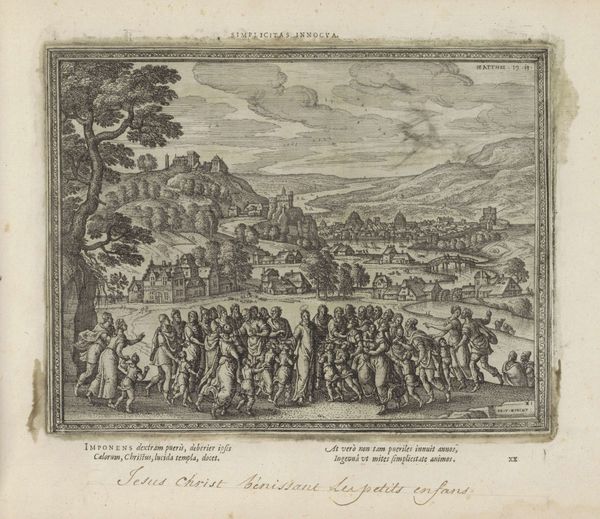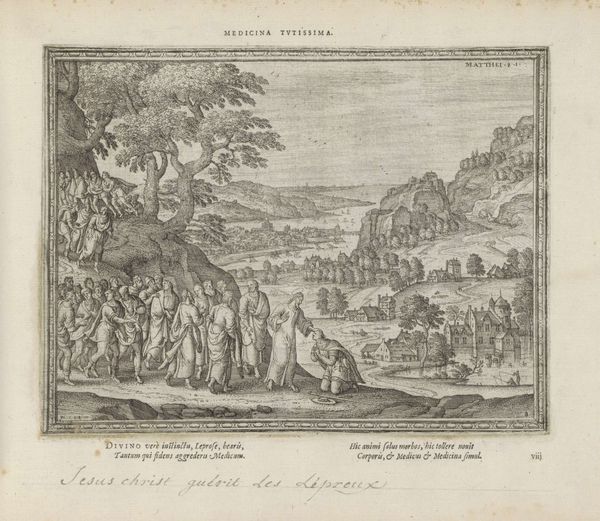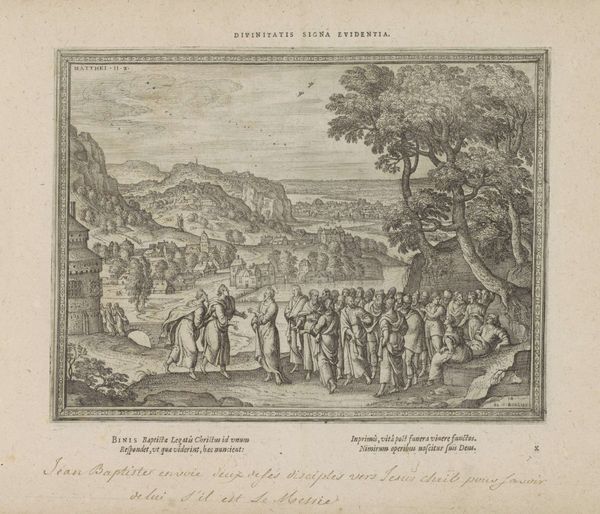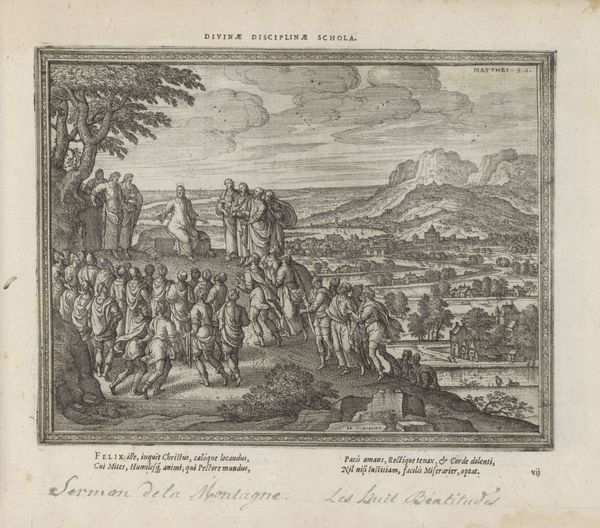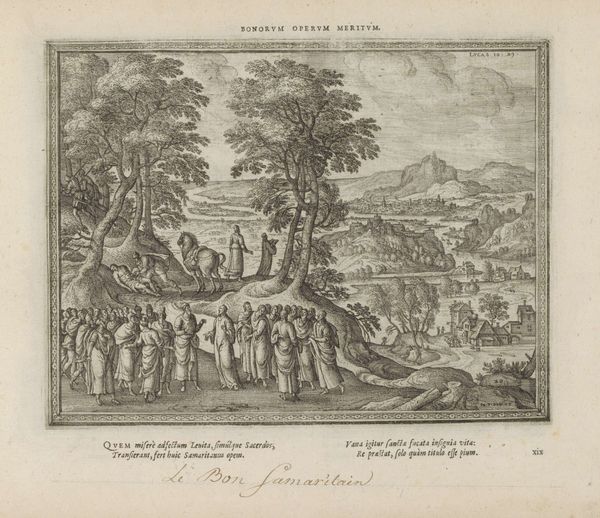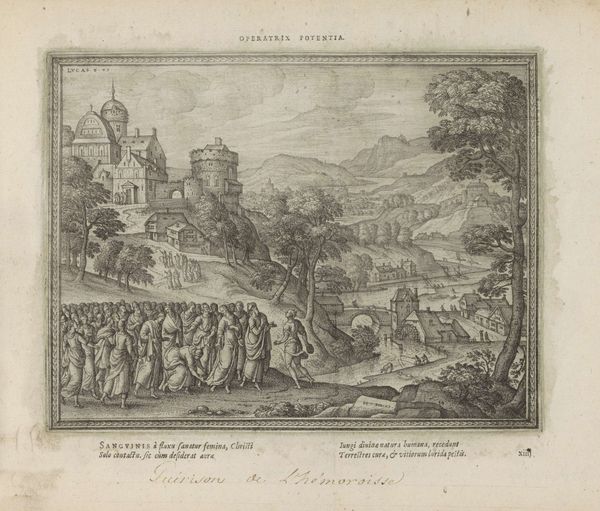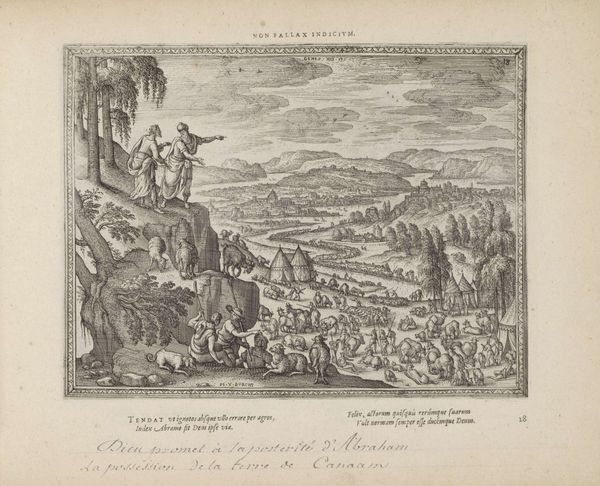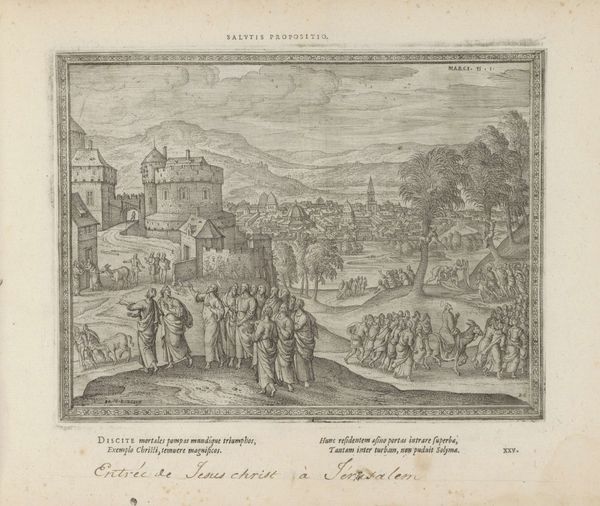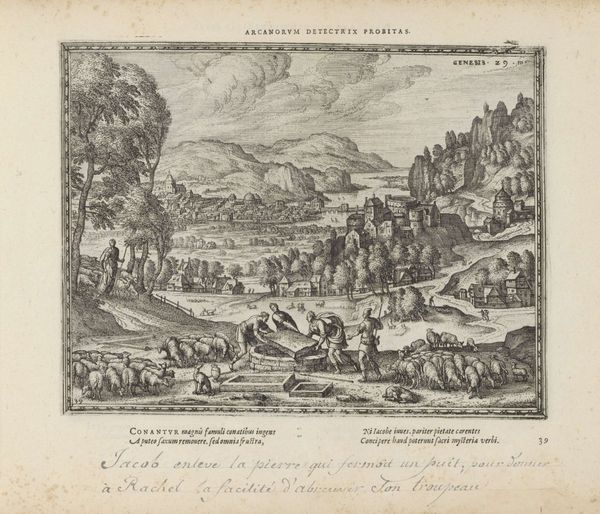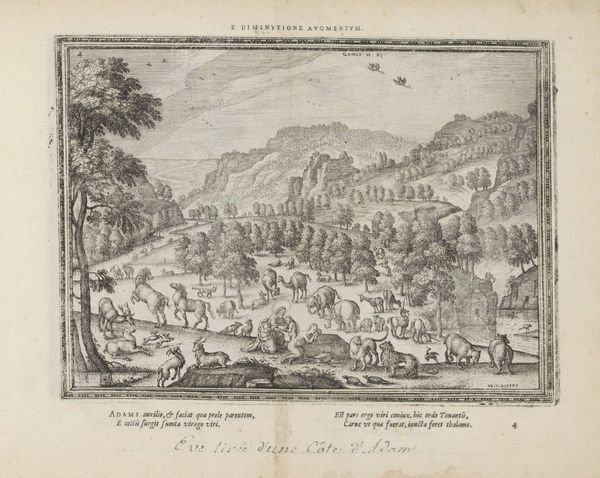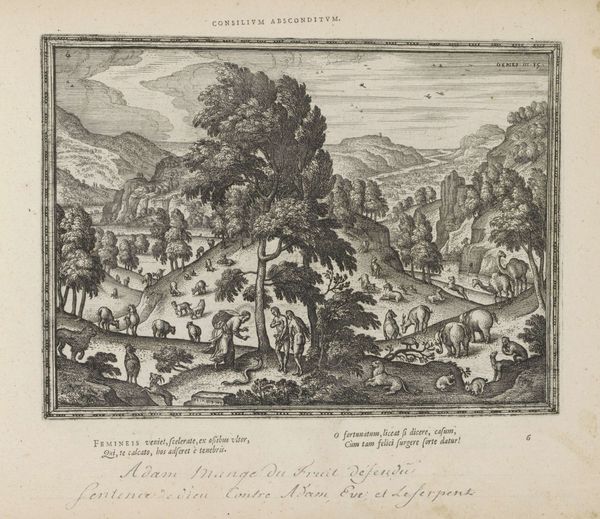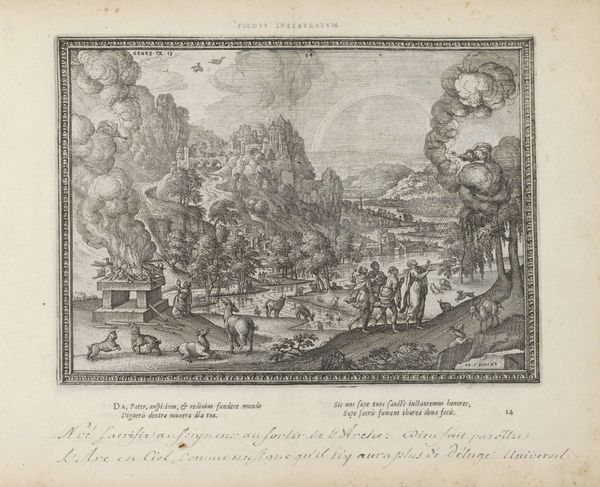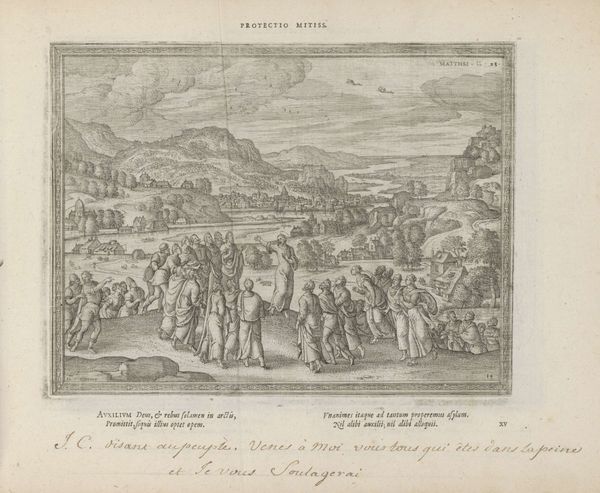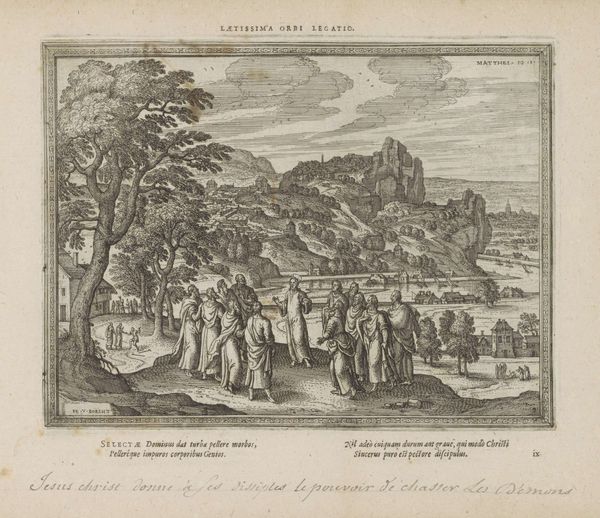
print, engraving
#
baroque
# print
#
landscape
#
figuration
#
history-painting
#
northern-renaissance
#
engraving
Dimensions: height 191 mm, width 245 mm
Copyright: Rijks Museum: Open Domain
Editor: This engraving, "Johannes de Doper predikt tot de menigte," or "John the Baptist Preaching to the Crowd," by Pieter van der Borcht, made sometime between 1582 and 1613, is fascinating. It feels very ordered, but also slightly overwhelming with the sheer number of figures. How do you approach a work like this? Curator: I see this piece first and foremost as a product of its time, deeply rooted in the socio-economic context of printmaking. Consider the process: the labor of the engraver, the cost of the materials like the copper plate and ink, the dissemination through print shops, the consumption by a public eager for biblical scenes. These factors shape the artwork’s accessibility and meaning. Do you see how the medium itself, engraving, allows for a wide distribution of religious ideology? Editor: Absolutely. So the availability of prints like these influenced how religious messages were spread? Curator: Precisely! This wasn't just about aesthetic beauty; it was about manufacturing belief. Look at the precision and detail achieved through the engraver’s labor. Notice how that labor creates an accessible and affordable piece of propaganda. What do you think the repetitive nature of the process, the lines upon lines etched into the plate, tells us about the message itself? Editor: It seems like it would almost create a sense of mass production even though it is very detailed… almost a manufactured importance? I hadn't considered the economic side so deeply before. Thanks! Curator: Considering art as a material practice really reframes how we see its cultural power and accessibility in history, don’t you think?
Comments
No comments
Be the first to comment and join the conversation on the ultimate creative platform.
